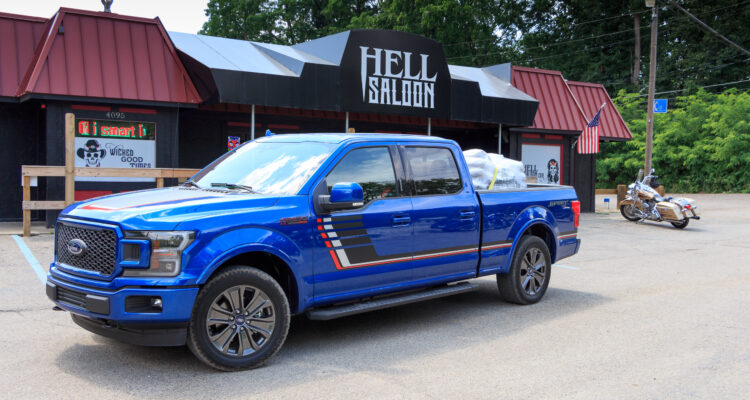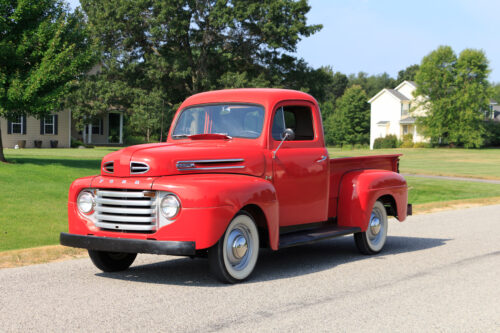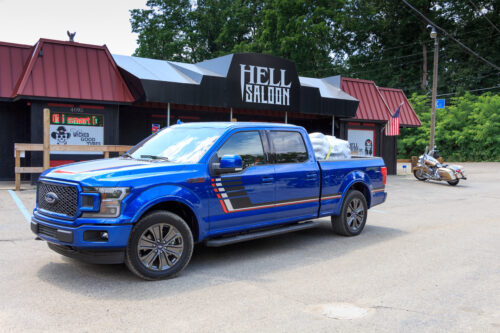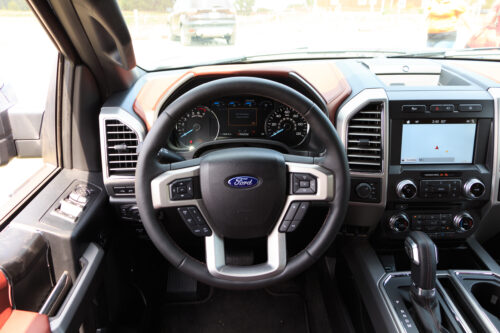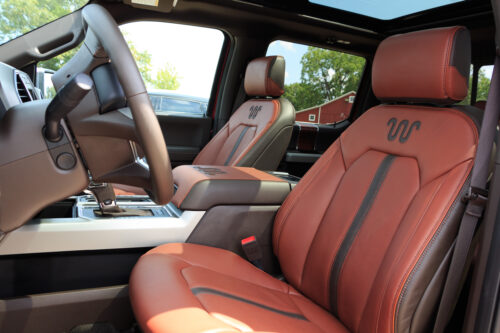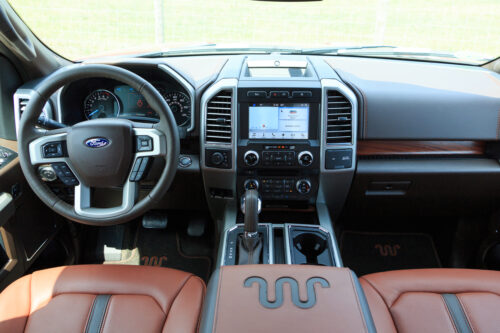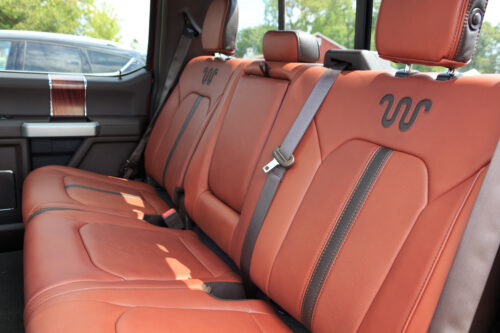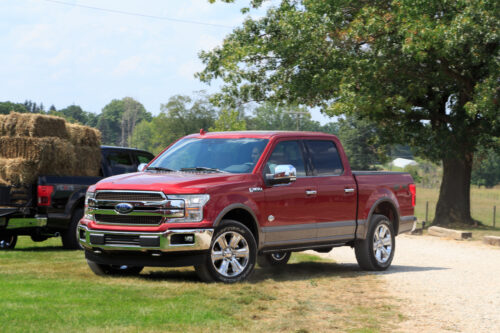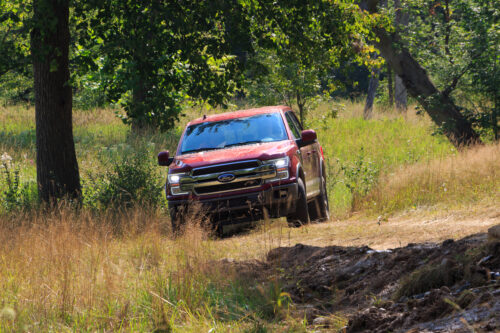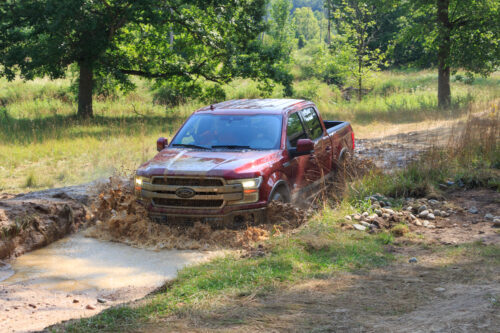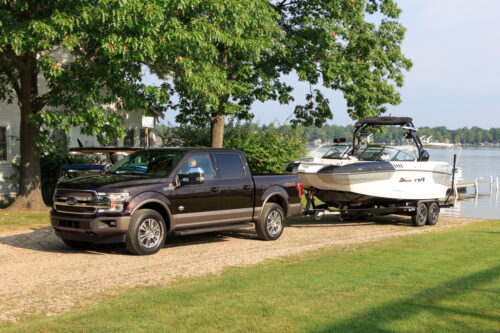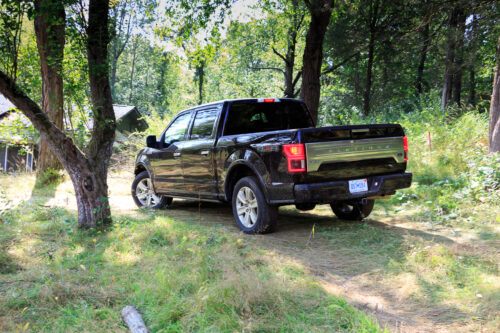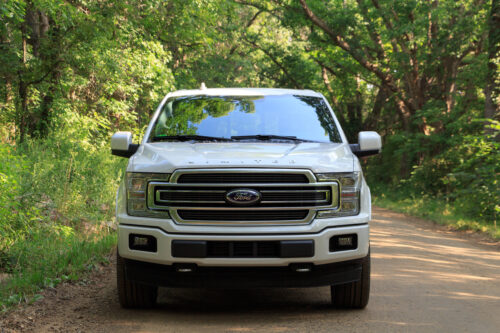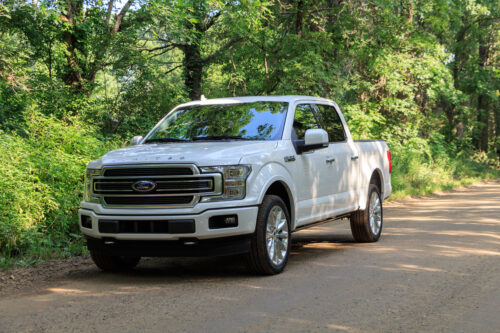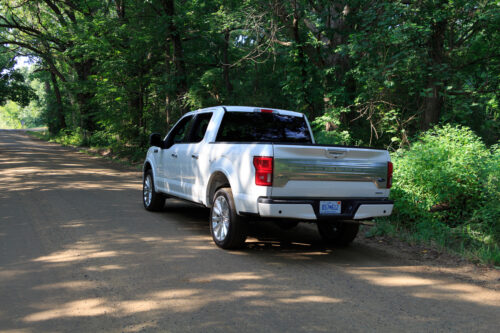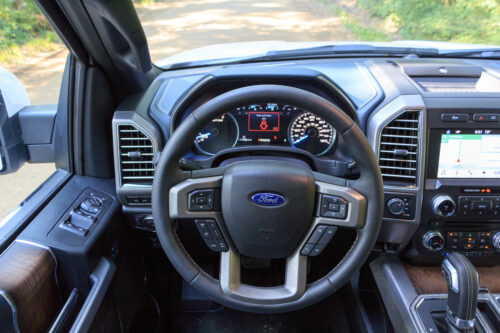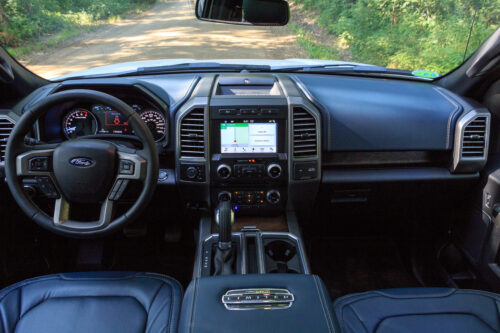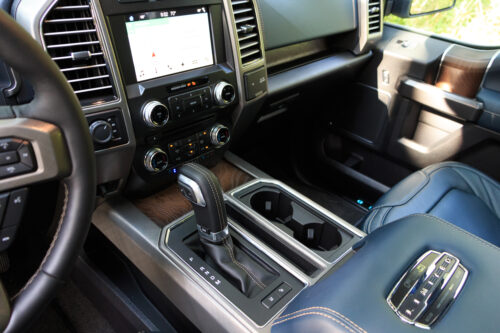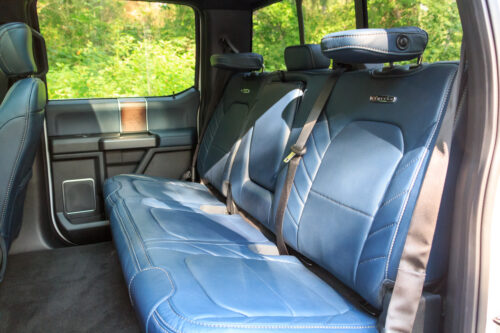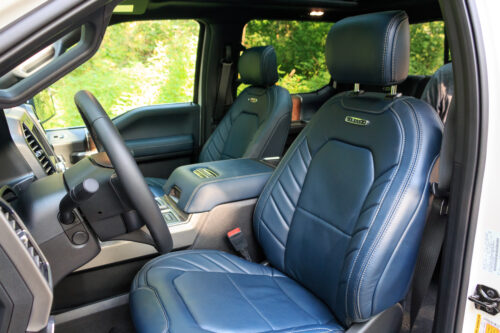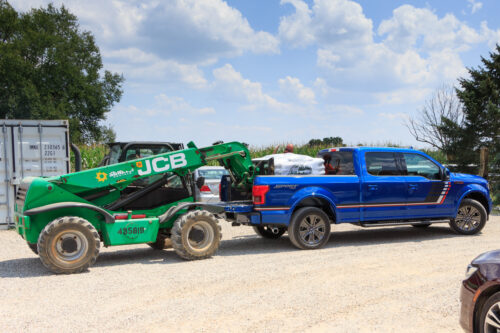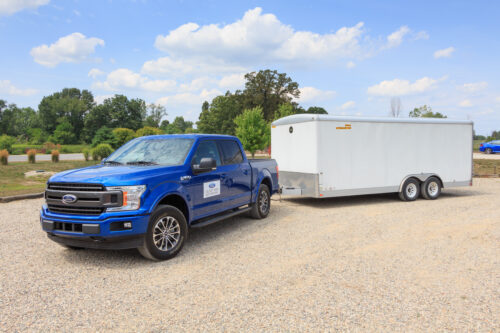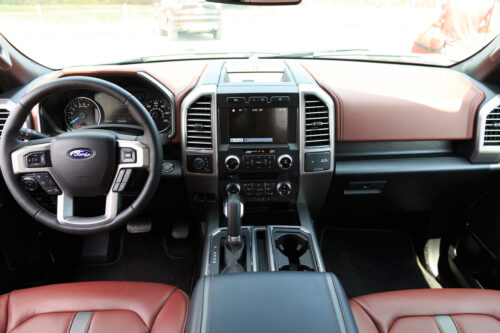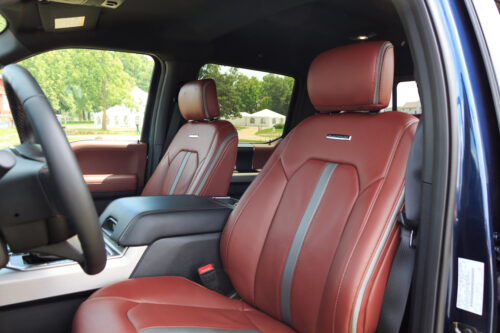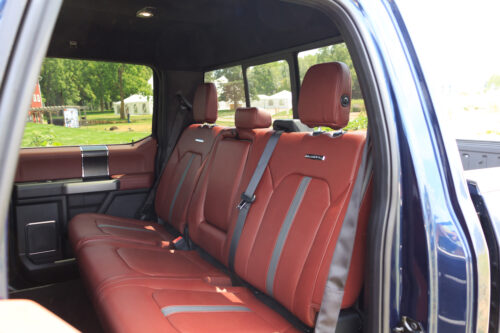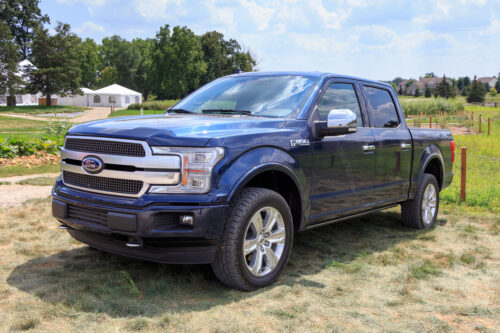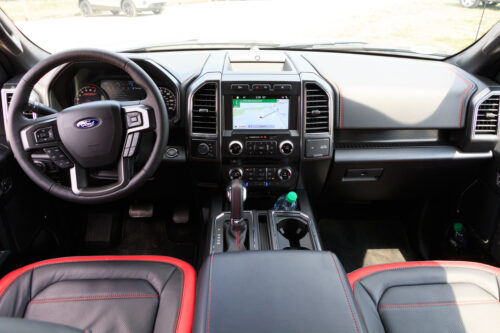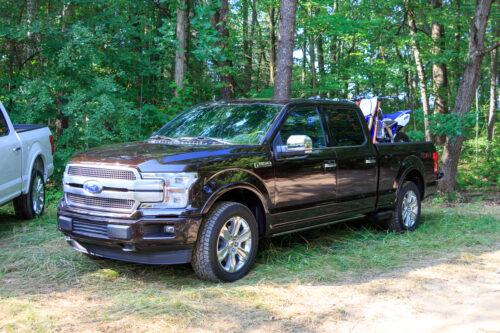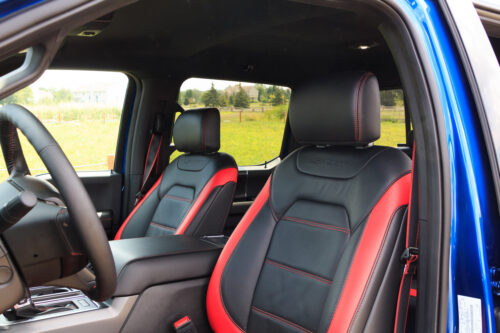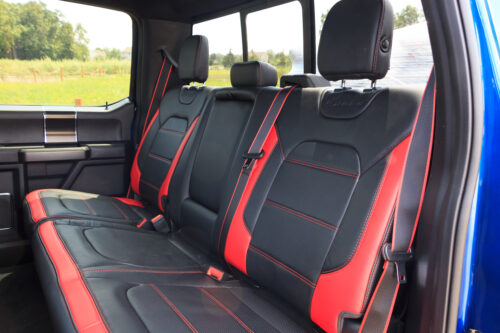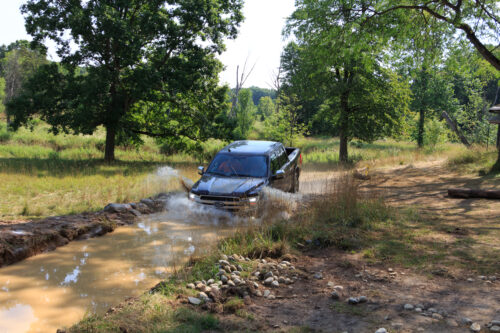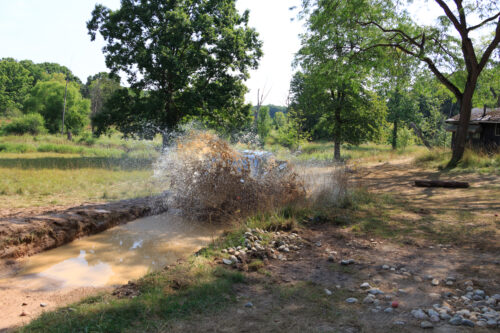Staying at the top of your segment for more than 51 years is difficult no matter what you make, sell, or do, but somehow Ford’s F-150 has managed just that. Despite heavy competition for decades from Ram and GM, and now Nissan and Toyota too, Ford has managed to keep the F-150 on top. And they sent me to Hell and back to show how they’ve done it. Hell, MI, that is.
You keep on top by continuing to change and improve, even when the competition isn’t. That’s why despite already having the second-newest truck, Ford keeps making big changes to improve the F-150. For 2018, that means revised engines, new styling, new tech features, and even changes to the axles and frame that mean the trucks can tow even more than before. Ford has even revised the impact structure for improved crash protection.
I’ll start with the powertrain changes. The F-150 will have six engines available. Well, five plus the high-output engine that is Raptor exclusive. That includes an all-new 3.0L Power Stroke V6 diesel that will arrive next spring.
The base V6 is new for this year. It’s a 3.3L that is a version of last year’s 3.5L. The all-aluminum block and heads are lighter than the old engine, but despite the smaller size, it makes 8 more horses and 12 lb-ft more than last year. Keeping the old six-speed automatic, the engine sees a mileage boost to 11.0 L/100 km combined.
The 2.7L Ecoboost V6 gets a lighter camshaft and new cam drive along with a new wastegate for the turbo. It adds 25 lb-ft of torque, boosting the total to 325 hp and 400 lb-ft.
If you still think you should’ve had a V8, the 5.0L gets a sprayed-on cylinder liner – tech borrowed from the Shelby GT250 Mustang – to reduce weight. It makes 395 hp and 400 lb-ft, up 10 and 13 from last year.
The second-generation 3.5L EcoBoost was new for 2017, so it doesn’t see changes. The 375 hp and 470 lb-ft of torque are nothing to ignore.
All of the F-150 gas engines have port and direct injection for 2018. The two systems combine to improve power, fuel economy, and noise at idle. They all add start-stop technology, with F-150 being the first pickup to have this on all models and engines. The system is seamless. The only time I noticed the engine coming back online was if I was watching the tach.
The 10-speed automatic transmission is now on all but the base V6 engine. That one holds on to the six-speed. Unlike many eight, nine, and 10-speed autos, this box doesn’t hunt or fidget between gears. It can drop multiple gears at once, making sure you aren’t waiting for two or three downshifts before finally summoning some power. It’s smooth enough that the only clue to the Shimano-like gear count was the mile-long gear indicator string on the dash.
Towing capacity is up on Max Tow equipped trucks. Tick that option box and get a revised frame that is thicker in the rear, stronger front axle tubes, and a higher gross combined weight. The package boosts towing by half a tonne on 3.5L Ecoboost trucks to 6,000 kg.
The biggest styling change is on the nose. The F-150 gets a big twin-bar grille with c-clamp headlights that mirror the larger Super Duty trucks. There are six-different grilles, with different trims getting their own style, and different finishes available on top of that. Sport has a mesh grille instead of the twin-bars.
The tailgate gets an F-150 logo stamped in on XL, XLT, and Lariat, with special trims and logos for the top models.
The new tech features include a truck segment exclusive adaptive cruise control option. I got the chance to see it in action with a loaded trailer, and the system could handle hard braking and acceleration, keeping a safe distance behind the vehicle in front, even when loaded. It can handle stop and go traffic too. Pre-Collision Assist with Pedestrian Detection helps to stop the truck for obstacles the driver didn’t see.
Ford has added a 4G LTE WI-FI hotspot that can connect up to 10 devices at once. There is also a new B&O Play audio system available on higher trim trucks for better sound.
Ford gave us a handful of trucks with every different engine and we spent a day at the farm to see how the F-150 performs. But first I wanted to check out the old model. Make that the first model. An original F-1, the first F-Series, launched in 1947. This was a 1950 model, but it really shows how much trucks have changed. An Un-synchronized three-speed gearbox, no seatbelts, no power steering or brakes, and pedals that were under my knees. The only creature comforts were an AM radio (that I couldn’t seem to operate).
Jumping from that truck to a 2018 Limited trim model was an incredible leap. The new F-150 still doesn’t drive like a car. But it does drive like a mid-size crossover. And that’s an amazing feat for something with 22-inch wheels and the ability to tow five tonnes. This truck has the 3.5L Ecoboost, but you’d never guess it was a turbo V6 by the exhaust note. It actually sounds better at full-throttle than the 5.0L V8 does. Not that the V8 doesn’t sound like it should, but the 3.5 somehow sounds more V8 than the V8.
Driving to the first event of the day, I was surprised at just how smooth this truck was. The usual pickup progression of feeling a bump move through the chassis from tire to butt through every bushing and body panel is gone. It feels like a crossover in the way it absorbs impacts. The increased frame stiffness means that the box doesn’t twist and move. But I will note that the roads on the test were much more smooth than I’m used to at home, with potholes suspiciously lacking.
The first stop was a chance to check out the class-exclusive trailer backup assist. It makes reversing a trailer even easier. Watch the backup camera and keep an eye on the mirrors. To control the trailer, you just turn the knob on the dash. Want the trailer to move a little to the left? Turn the knob a little to the left. No more worrying about which way to turn the wheel to make the trailer go opposite. Experienced towers might not use it, and will probably tease their tow-rookie buddies who use it, but for the occasional trailer hauler the feature will save hours of frustration and headache.
Then it’s time to take the F-150 off road. The off road test course used Platinum and King Ranch trim trucks, not the off-road special FX-4. Despite that, the trucks handled a course that included ruts, bumps, logs, and water up to the bumper without protest. The trucks felt solid on even the worst obstacles. The wide angle cameras in the nose help you keep your fancy truck out of the trees, and lets you see hidden obstacles. The cameras let you see what’s on the other side when you crest a steep hill.
With 600 kg of horse bedding on a pallet in the back of the truck, the F-150 rides as smoothly as it did empty. The rear suspension drooped, but still had plenty of travel left. Acceleration and braking were still strong, and it was easy to forget that the weight was back there. That’s with a hefty driver and two passengers as well, really testing the payload of the truck.
It’s with that payload in the back that I drove through Hell. It wasn’t marked with a street sign or an increase in temperature, but there was some roadwork going on. I always figured hell would be construction season all year. My partner for the drive and I took a quick picture at the Hell Saloon before getting the hell out…of Hell.
Testing out the adaptive cruise control with a trailer behind was an interesting experience. Not because the system misbehaved, but because the first time you count on the computer to throw out the anchor for about five tonnes of truck and trailer is a little nerve wracking. But the computer handled the braking just fine. The adaptive system even hangs back a little further when the truck is loaded to account for the extra stopping room needed. Just like the driver should be doing.
So how does the F-150 handle a loaded trailer? I made sure to try out the 2.7L Ecoboost V6, the smallest engine they had with a trailer attached. The tiniest engine had around 3,400 kg on the trailer, and it had more than enough power to haul it. It accelerated and stopped well, although it did have a little less engine braking than the 3.5L and 5.0L engines. That’s the consequence of less displacement. But with the rated fuel economy saving over a litre per 100 km combined compared with the 3.5L Ecoboost, a little less engine braking is just fine with me. The available integrated trailer brake controller took up the slack and stopped the trailer just fine anyway.
The 3.5L V6 and 5.0L V8 towed heavier trailers a little more quickly, but if you’re towing something heavy enough to notice the difference, you probably shouldn’t be hurrying anyway. All three tow more weight more quickly than V8 trucks from just a few years ago. More importantly, they stop that weight more quickly and can manoeuvre it better too.
Ford gave me lots of chances to show how tough the truck was, but today’s trucks are more than just towing and hauling. They’re the modern family car, which means they need to be roomy, comfortable, and quiet. The F-150 has the roomiest feeling cab of the half-ton pickups. The driver seat will go back until I can’t touch the pedals, but still has more legroom in the back than 6′-3″ me could ever use. The center console has two cupholders that will hold even the biggest gas station drink cups and opens up to a storage space that looks like it’s as big as my oven.
The seat, radio, and climate controls, including the heat and massage seat options, are controlled through the Sync touchscreen. If you aren’t a fan of the screens, almost every feature gets a real button or knob too. They’re not quite as big as the ones GM uses in the Silverado and Sierra, but should still be usable for drivers with work or winter gloves on. And the B&O Play audio system is the best in a current truck.
So it’s more powerful, more capable, more comfortable, and gets better fuel economy. If you want to stay on top of the truck game, that’s how you do it. My own choice would be a 2.7L V6 equipped truck in either XLT or Lariat trim. Fewer bells and whistles improves fuel economy and drops the price. Plus I can’t help but feel a little guilty if I’m dumping a yard of manure in the back of a Limited trim truck that is knocking on $80,000.
2018 Ford F-150
Engines: 3.3L V6, 2.7L twin-turbo V6, 5.0L V8, 3.5L twin-turbo V6
Power: 290 hp @ 6,500 rpm, 325 hp @ 5,000 rpm, 395 hp @5,750 rpm, 375 hp @ 5,000 rpm.
Torque: 265 lb-ft @ 4,000 rpm, 400 lb-ft @ 2,750 rpm, 400 lb-ft @ 4,500 rpm, 470 lb-ft @ 3,500 rpm.
Price: Reg Cab 4×2 XL 122 Inch Wheelbase $30,499.00, Reg Cab 4×2 XLT 122 Inch Wheelbase $34,799.00, Super Cab Lariat 145 Inch Wheelbase $50,499.00, Super Crew 4×4 King Ranch 145 Inch Wheelbase $68,129.00
Super Crew 4×4 Platinum 145 Inch Wheelbase $70,579.00
Super Crew 4×4 Limited 145 Inch Wheelbase $77,779.00
Fuel Economy: F-150 4×2 2.7L V6 10.8 L/100 km combined F-150 4×4 5.0L V8 14.2 L/100 km combined
Related links:
Ford.ca



